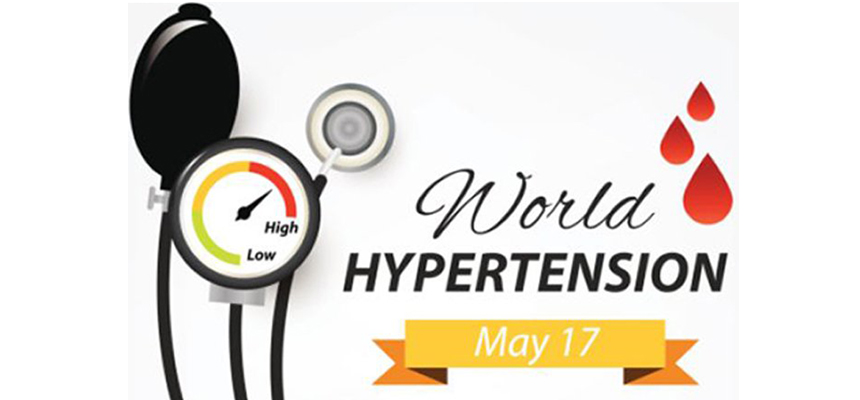Cancer is a preventable condition

Being aware of the symptoms and making lifestyle changes is imperative
There are about 2.5 million people living with cancer in India and over 7 lakh new cases get registered every year. Of all the various types of cancer, those of the oral cavity and lungs in males and cervix and breast in females account for about 50 per cent of all related deaths in the country.
“The prevalence of cancer in our country is not uniform all over. There is a difference in the types of cancer that affect people basis rural and urban settings. We have seen that in rural women, cervical cancer is the most widespread while in urban women, breast cancer is the most rampant. In case of men, rural people are majorly affected by cancers of the oral cavity while rural men are greatly inflicted by cancer of the lung. Although cancer has become an epidemic with a steep rise in its incidence, the irony is that cancer medicines are very expensive and beyond the reach of a common man. Thus, price control is very necessary to provide people with affordable cancer medicines,” says Padma Shri Awardee Dr K K Aggarwal, President Heart Care Foundation of India (HCFI) and Immediate Past National President Indian Medical Association (IMA).
Although the exact cause of cancer is not known, research indicates that certain risk factors may increase a person’s chances of developing cancer. These include things people cannot control, like age and family history. Lifestyle choices that increase your chances of contracting breast cancer are the usual suspects such as smoking, obesity, lack of exercise and poor diet.
There are four major types of clinical preventive care: immunizations, screening, behavioral counseling (lifestyle changes), and chemoprevention.
“Screening is the identification of an asymptomatic disease, unhealthy condition, or risk factor. Primary prevention are interventions to keep disease from occurring (eg, immunization for communicable disease); secondary prevention as detection of early asymptomatic disease (eg, screening); and tertiary prevention as reducing complications of disease (eg, eye examinations in patients with diabetes). This nomenclature is applied differently by some other disciplines,” says Dr Aggarwal.
![]() SCREENING
SCREENING
Cancer screening aims to detect cancer before symptoms appear. “Timely screening of cancer aids in early detection and successful treatment. Blood tests, urine tests, or imaging are the common screening methods. Breast cancer screening involves clinical and self breast examination, mammography, genetic screening, ultrasound and magnetic resonance imaging. Cervical screening by the Pap test or other methods are highly effective in detecting and preventing cervical cancer. Oral cavity examinations are commonly used for screening of oral cancer,” says Dr Shivani Sharma, Pathologist, CORE Diagnostics, New Delhi.
Talking about the importance of screening, Dr Shivani says, “Cancer is easier to treat at an early stage when the tissue is found to be abnormal. Screening tests can help in detecting cancer at an early stage, before the onset of symptoms. However, by the time symptoms appear, cancer has already grown and spread, making it harder to treat or cure. Screening tests are recommended by doctors to prevent the symptoms of cancer and it does not always mean that he thinks that the person has cancer.”
![]() BREAKTHROUGH
BREAKTHROUGH
A new study has formulated a blood test that can help in detecting the majority of cancers, including four of the biggest cancer killers: breast, colon, lung and ovarian cancer. Scientists have discovered that dying tumor cells release small pieces of their DNA into the bloodstream. These pieces are called cell-free circulating tumor DNA and can be identified through this blood test. However, the test is still a long way from being used to screen for cancer, but the study shows that we can get there soon.
“Although, the new cancer blood test promises to be a new milestone in medical science, it is currently at a preliminary stage and its application on the population is still to be measured. Scientists are working towards it and everyone is waiting to see how it will work. As of now, screening tests continue to be the leading detection mechanism for various kinds of cancers,” says Dr Shivani.
![]() PREVENTION IS BETTER THAN CURE
PREVENTION IS BETTER THAN CURE
Here are some ways in which one can diagnose and prevent the onset of this condition at an early stage.
![]() Pay attention to symptoms and get yourself checked regularly.
Pay attention to symptoms and get yourself checked regularly.
![]() Using any type of tobacco puts a person at an increased risk of cancer. Avoiding or stopping the consumption of tobacco is one of the foremost steps in cancer prevention.
Using any type of tobacco puts a person at an increased risk of cancer. Avoiding or stopping the consumption of tobacco is one of the foremost steps in cancer prevention.
![]() Filter tap water properly as this can reduce your exposure to possible carcinogens and hormone-disrupting chemicals.
Filter tap water properly as this can reduce your exposure to possible carcinogens and hormone-disrupting chemicals.
![]() Get vaccinated on time and as per schedule. For example, the Human Papilloma Virus (HPV) vaccine helps prevent most cervical cancers and several other kinds of cancer.
Get vaccinated on time and as per schedule. For example, the Human Papilloma Virus (HPV) vaccine helps prevent most cervical cancers and several other kinds of cancer.
![]() Drinking plenty of water and other liquids can help in reducing the risk of bladder cancer by diluting the concentration of cancer-causing agents in urine and helping to flush them through the bladder faster.
Drinking plenty of water and other liquids can help in reducing the risk of bladder cancer by diluting the concentration of cancer-causing agents in urine and helping to flush them through the bladder faster.
![]() Most importantly, make lifestyle changes such as eating a healthy diet and getting regular exercise. Fruits and vegetables are rich in antioxidants which can help ward off diseases.
Most importantly, make lifestyle changes such as eating a healthy diet and getting regular exercise. Fruits and vegetables are rich in antioxidants which can help ward off diseases.

 Disclaimer: Welthi.com does not guarantee any specific results as a result of the procedures mentioned here, and the results may vary from person to person.
Disclaimer: Welthi.com does not guarantee any specific results as a result of the procedures mentioned here, and the results may vary from person to person.









